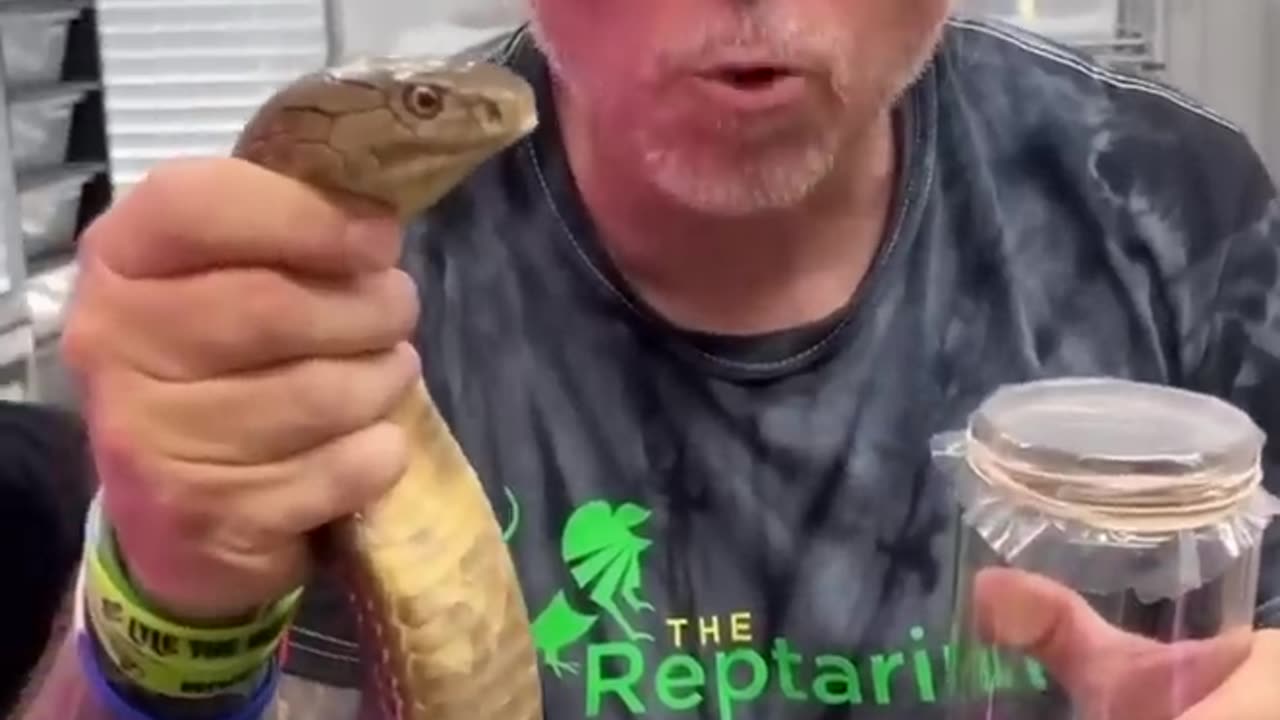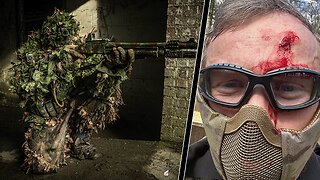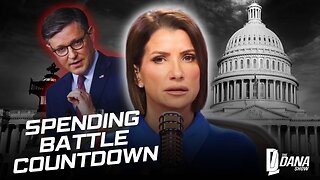Premium Only Content

King Cobra Venom Milking! #ThatMoment
Safety precautions: Milking king cobras is a dangerous task, as these snakes are large and can deliver a lethal bite. Safety precautions are of utmost importance. The handler should wear protective gear, including gloves, eye protection, and appropriate clothing.
Enclosure: King cobras are typically kept in secure enclosures. The handler needs to carefully transfer the snake from its enclosure to the milking area.
Restraint: The snake is usually restrained using specialized snake handling tools and techniques to ensure the handler's safety and minimize stress on the snake. It's essential to handle the snake gently to avoid causing harm.
Venom extraction: Venom is extracted from the snake's fangs by gently pressing or massaging the venom glands located behind the snake's eyes. As the snake bites onto a specialized container, the venom is released and collected. It's crucial to maintain a calm environment during this process to avoid stressing the snake.
Storage: The collected venom is stored in a sterile container and kept at low temperatures to preserve its potency for research or antivenom production.
Frequency: Venom milking should be done at intervals, allowing the snake to recover fully between milking sessions. Stress should be minimized to keep the snake healthy.
Research and antivenom production: Extracted venom can be used for various research purposes, including studying the composition of venom, its effects, and potential medical applications. In regions where king cobras are native and pose a threat, venom may be used to produce antivenom to treat snakebite victims.
-
 12:41
12:41
Gun Owners Of America
1 hour agoWe're Fighting Back Against Mexico In Court!
82 -
 LIVE
LIVE
The Charlie Kirk Show
2 hours agoThe CR Quagmire + An Hour of PBD + Catholic in Hollywood | Davis, Patrick Bet David, Rep. Burlison
7,505 watching -
 32:54
32:54
Kicking Mustang
7 hours ago $0.02 earnedWatch the Best Ghillie Sniper Moments of 2024...
61 -
 49:34
49:34
PMG
13 hours ago"Hannah Faulkner and Ron Berutti | NEW SUPREME COURT CASES"
476 -
 28:29
28:29
The Boomer Effect
14 hours agoPondering Life in Modern America
20 -
 1:01:44
1:01:44
Grant Stinchfield
1 hour ago $2.09 earnedDon't Focus on the Drones... Focus on the Mysterious Floating Orbs!
13.3K1 -
 LIVE
LIVE
The Dana Show with Dana Loesch
1 hour agoSPENDING BATTLE COUNTDOWN | The Dana Show LIVE On Rumble!
567 watching -
 59:38
59:38
The Dan Bongino Show
4 hours agoThings Have Changed, It's Trump's GOP Now (Ep. 2390) - 12/18/2024
559K1.11K -
 LIVE
LIVE
Viss
2 hours ago🔴LIVE - Is Delta Force the Best Casual Extraction Shooter? - Delta Force
233 watching -
 53:22
53:22
The Rubin Report
3 hours agoElon Musk's Major Announcement Reveals His Next Target & It's Huge
44.2K32